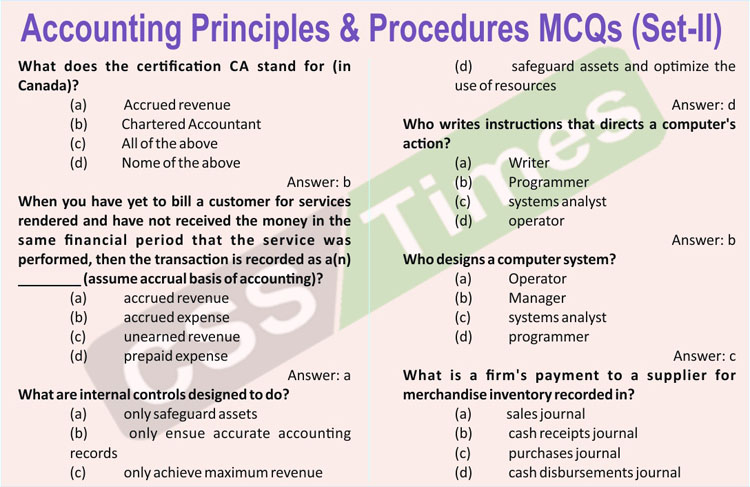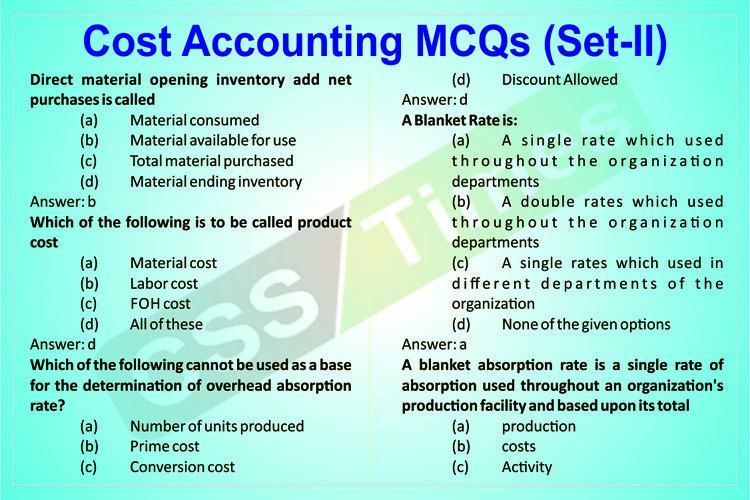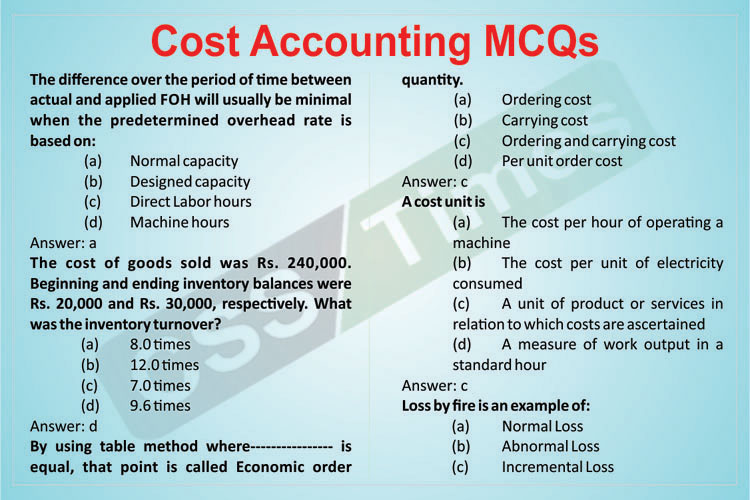What does the certification CA stand for (in Canada)?
(a) Accrued revenue
(b) Chartered Accountant
(c) All of the above
(d) Nome of the above
Answer: b
When you have yet to bill a customer for services rendered and have not received the money in the same financial period that the service was performed, then the transaction is recorded as a(n) ________ (assume accrual basis of accounting)?
(a) accrued revenue
(b) accrued expense
(c) unearned revenue
(d) prepaid expense
Answer: a
What are internal controls designed to do?
(a) only safeguard assets
(b) only ensue accurate accounting records
(c) only achieve maximum revenue
(d) safeguard assets and optimize the use of resources
Answer: d


